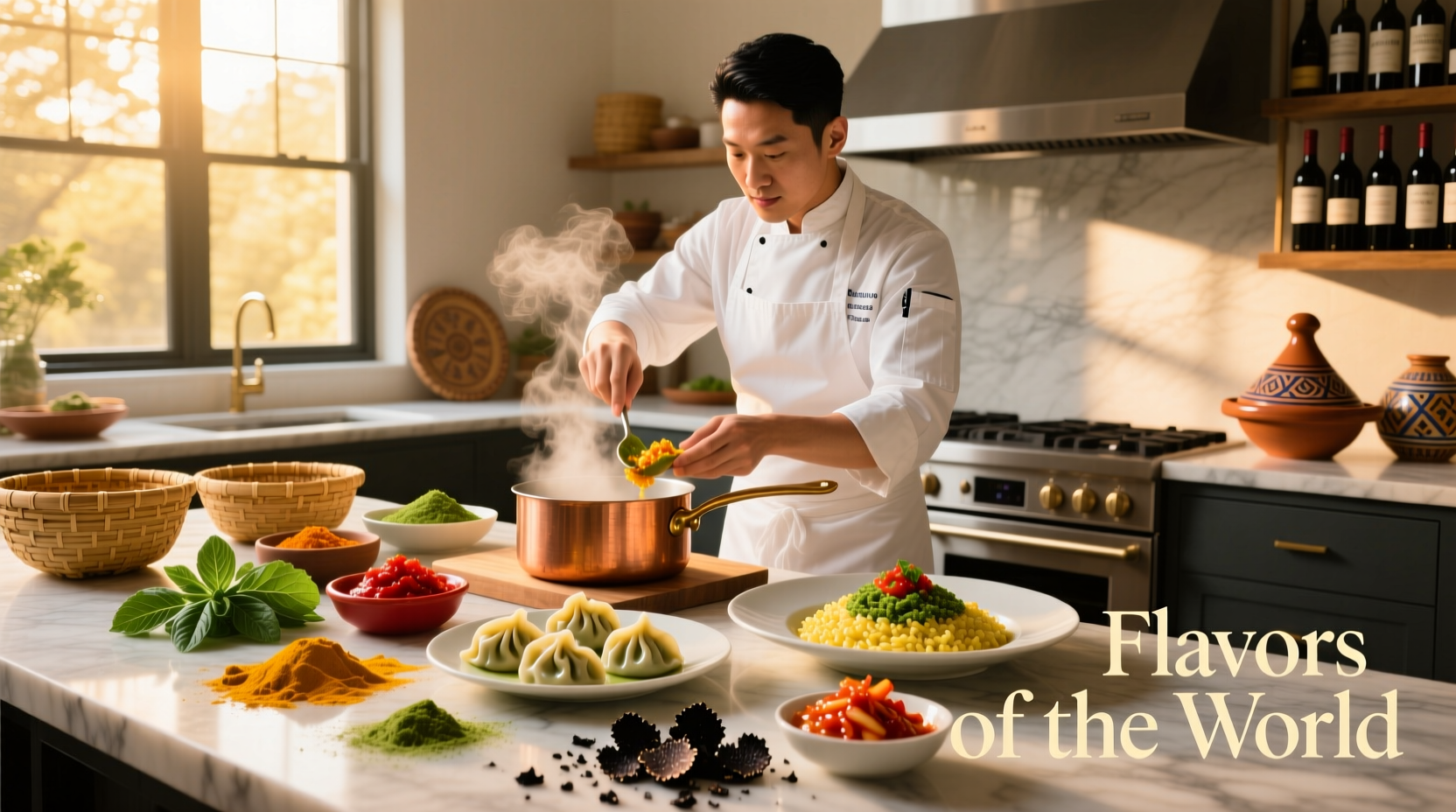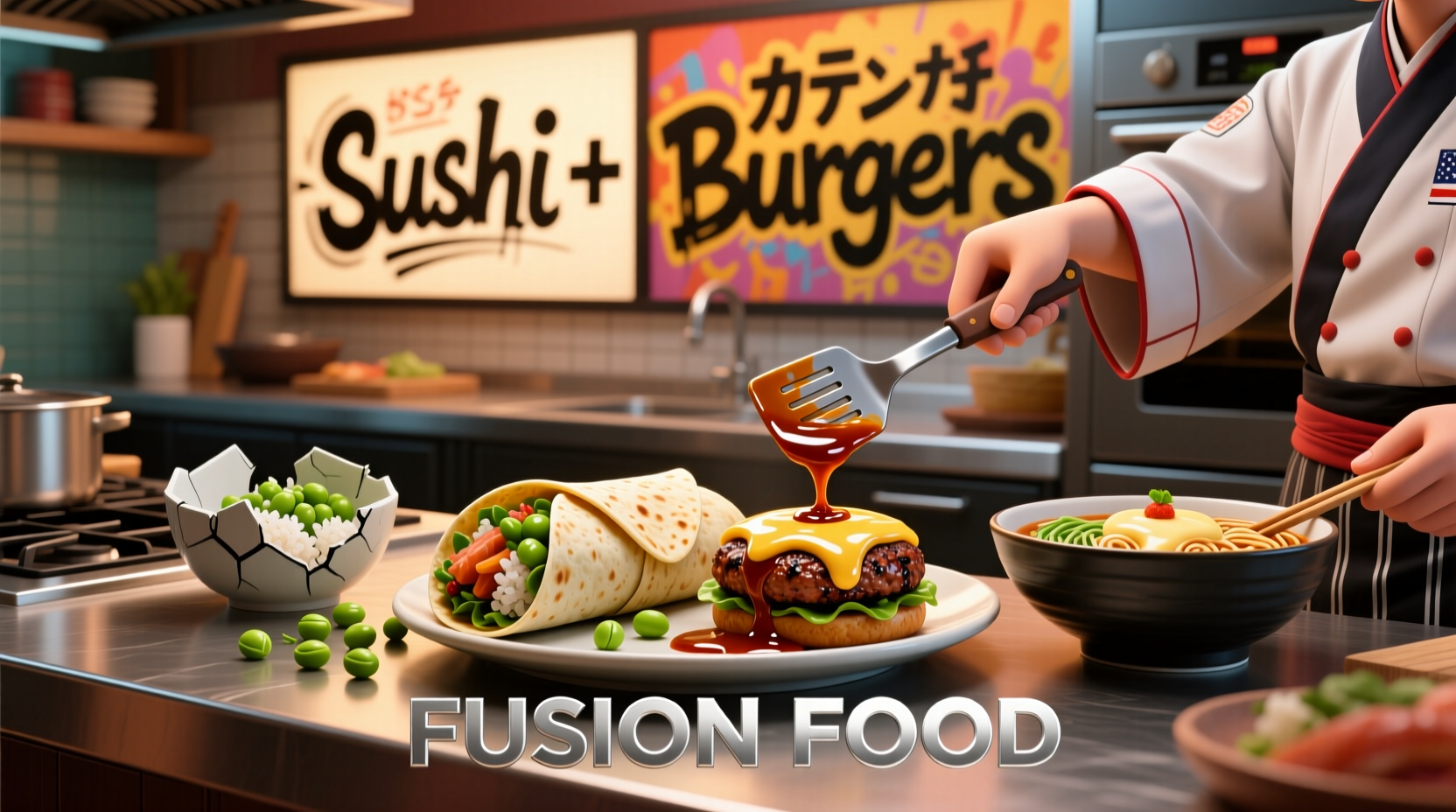Ever wondered why your favorite sushi roll might contain avocado or why Korean tacos have become a food truck phenomenon? Understanding fusion food isn't just about trendy restaurant menus—it's about recognizing how cultures naturally evolve through culinary exchange. In this comprehensive guide, you'll discover the authentic principles behind successful fusion cuisine, learn to distinguish thoughtful fusion from cultural appropriation, and gain practical insights you can apply whether you're dining out or experimenting in your own kitchen.
Defining Fusion Food: Beyond the Buzzword
Fusion food represents the intentional combination of culinary techniques, ingredients, and traditions from two or more distinct cultural backgrounds to create something new while respecting the origins of each component. Unlike simple adaptation—where dishes naturally evolve within a single culture over time—fusion cuisine deliberately bridges culinary traditions.
True fusion food maintains integrity by:
- Understanding the cultural significance of each ingredient and technique
- Preserving essential elements from each tradition
- Creating balanced flavor profiles that don't overpower any single influence
- Avoiding superficial combinations that lack culinary logic
Consider California rolls—a now-classic example where Japanese sushi techniques met American preferences. The inclusion of avocado (uncommon in traditional Japanese sushi at the time) and crab instead of raw fish made sushi more accessible to Western palates while maintaining core sushi preparation methods. This thoughtful adaptation respected both culinary traditions rather than merely slapping ingredients together.

The Evolution of Fusion Cuisine: A Historical Timeline
Fusion food isn't a modern restaurant trend—it's been evolving for centuries through natural cultural exchange. Understanding this historical context helps distinguish authentic fusion from superficial combinations.
| Historical Period | Key Developments | Notable Examples |
|---|---|---|
| Ancient Trade Routes (200 BCE-1500 CE) | Spice trade between Asia, Middle East, and Europe | Black pepper appearing in ancient Roman recipes; introduction of citrus to Mediterranean cuisine |
| Colonial Era (1500-1800) | Forced cultural exchanges through colonization | Cajun cuisine developing from French techniques with African and Native American ingredients |
| Early 20th Century | Immigration patterns creating cultural melting pots | Tex-Mex cuisine emerging from Mexican and American culinary traditions |
| 1970s-1980s | Intentional "fusion" movement begins | Wolfgang Puck's California cuisine blending French techniques with Asian ingredients |
| 21st Century | Globalization accelerates fusion innovation | Nikkei cuisine (Japanese-Peruvian fusion) gaining worldwide recognition |
Fusion Food vs. Cultural Appropriation: Understanding the Boundary
One of the most important distinctions in contemporary culinary discussion is between respectful fusion and problematic cultural appropriation. Successful fusion cuisine operates within clear boundaries that maintain respect for cultural origins.
Thoughtful fusion chefs typically:
- Collaborate with practitioners from the cultures they're incorporating
- Give proper credit to culinary traditions they're drawing from
- Understand the historical and cultural significance of ingredients
- Avoid using sacred or ceremonial elements out of context
- Share profits and recognition with cultural originators when appropriate
The difference often comes down to intention and execution. When chefs approach fusion with deep respect, research, and collaboration, they create meaningful culinary bridges. When they merely borrow exotic elements without understanding their significance, they risk cultural appropriation.
Successful Fusion Food Examples Worth Knowing
Not all fusion cuisine achieves the perfect balance. The most successful examples demonstrate thoughtful integration rather than random combination. Here are three globally recognized fusion cuisines that have earned their place in culinary history:
Nikkei Cuisine (Japanese-Peruvian)
Developed by Japanese immigrants in Peru starting in the late 19th century, Nikkei cuisine represents one of fusion food's most successful marriages. Chefs combine Japanese precision and techniques with Peruvian ingredients like ají peppers and native potatoes. The result? Dishes like tiradito (a Peruvian ceviche preparation using Japanese slicing techniques) that honor both traditions while creating something entirely new.
Korean-Mexican Fusion
Popularized by chef Roy Choi's Kogi BBQ food trucks in Los Angeles, this fusion combines Korean marinades and flavors with Mexican taco formats. The success lies in complementary flavor profiles—gochujang's sweet-spicy notes work beautifully with traditional taco elements. Unlike superficial combinations, this fusion respects both culinary traditions while creating accessible new experiences.
Indo-Chinese Cuisine
Developed by Chinese immigrants in India, this fusion adapts Chinese cooking techniques to Indian ingredients and spice preferences. Dishes like chili chicken and Manchurian represent this unique blend, featuring wok cooking methods with Indian spices like cumin and coriander. This cuisine demonstrates how fusion naturally develops through community interaction rather than being artificially constructed.
Creating Thoughtful Fusion: Principles for Chefs and Home Cooks
Whether you're a professional chef or home cook experimenting with flavors, these principles will help you create fusion food that respects traditions while innovating:
- Understand before combining - Study the culinary traditions you're working with. What makes each element significant? How do flavors traditionally balance in each cuisine?
- Start with complementary flavor profiles - Look for natural connections between cuisines rather than forcing incompatible elements together
- Preserve essential techniques - Maintain core preparation methods from each tradition when possible
- Balance rather than dominate - No single cultural influence should completely overwhelm the others
- Credit your inspirations - Acknowledge the culinary traditions you're drawing from
When experimenting at home, begin with small modifications to familiar dishes. Try adding miso to your tomato-based pasta sauce, or incorporate traditional Mexican spices into your stir-fry. The key is understanding why certain combinations work rather than randomly mixing ingredients.
Common Misconceptions About Fusion Food
Fusion cuisine often faces criticism based on misunderstandings. Let's clarify some common misconceptions:
- "All fusion food is cultural appropriation" - Appropriation occurs when elements are taken without understanding or respect. Thoughtful fusion involves collaboration, credit, and deep understanding of the traditions being combined.
- "Fusion food lacks authenticity" - Authenticity in food is complex. Many celebrated cuisines evolved through fusion—consider how tomatoes transformed Italian cooking after arriving from the Americas.
- "Fusion is just a restaurant marketing gimmick" - While some establishments misuse the term, genuine fusion cuisine follows deliberate principles that respect multiple culinary traditions.
- "Traditional cuisines never change" - All cuisines naturally evolve through ingredient availability, technological advances, and cultural exchange. Fusion represents a conscious acceleration of this natural process.
The most successful fusion chefs approach their craft with humility, research, and respect for the culinary traditions they're working with. When done thoughtfully, fusion cuisine celebrates cultural connections rather than exploiting them.











 浙公网安备
33010002000092号
浙公网安备
33010002000092号 浙B2-20120091-4
浙B2-20120091-4